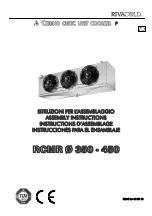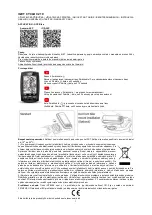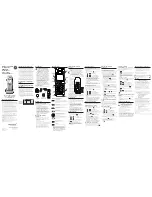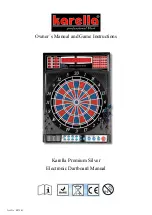
RCMR Pag. 32 Rev. 02 02 13
UK
G
Be careful for sharp cutting parts and when cleaning the air-cooled evaporator
3.5 Proper and improper use of the partly completed machinery
The
PARTLY COMPLETED MACHINERY
is designed and built to be inserted in a refrigerating circuit that can be used in the field of industrial
and commercial refrigeration in a permanent site.
Each model of the
PARTLY COMPLETED MACHINERY
can make use of the refrigerant gas specifically foreseen and indicated on its plate.
The
PARTLY COMPLETED MACHINERY
has been designed and built to work in environments that do not have a potentially explosive
atmosphere.
It is a sound cautionary norm to place powder extinguishers near the
PARTLY COMPLETED MACHINERY
. To prevent the possibility of a fire
outbreak, it is necessary to keep the
PARTLY COMPLETED MACHINERY
clean of pieces of plastic, oils, solvents, paper, and rags.
The use of the
PARTLY COMPLETED MACHINERY
for different operations or the use of a refrigerant gas different from the one indicated on
the plate could cause damages to persons or to the
PARTLY COMPLETED MACHINERY
itself, and are therefore considered improper uses for
which the Manufacturer does not deem itself responsible.
ATTENTION:
in case of a different intended use, it is essential to first consult the Technical Office of the Manufacturer.
3.6 General Warnings and Behavioral Norms
In order to avoid any condition of risk to persons or of damages to the
PARTLY COMPLETED MACHINERY
, we recommend that you diligently
follow the general warnings and behavioral norms reported herein.
DANGER:
the Manufacturer rejects any responsibility for possible damages to things and/or persons
stemming from improper interventions performed by unqualified, untrained, or unauthorized
personnel.
The operators appointed to manage the
PARTLY COMPLETED MACHINERY
must be duly instructed on how to best use it risk-free, and must
operate in a comfortable environment that can ensure the best possible conditions of safety and hygiene.
DANGER:
prevent that the
PARTLY COMPLETED MACHINERY
be used by unauthorized or uninstructed personnel
without surveillance: in fact, before starting to work, each operator must be perfectly
knowledgeable of the characteristics of the
PARTLY COMPLETED MACHINERY
; he must, moreover, have
FULLY
read these instructions.
Before using the
PARTLY COMPLETED MACHINERY
, make sure that any condition dangerous to safety has been duly eliminated and
that there are no operators in the dangerous areas near the
PARTLY COMPLETED MACHINERY
.
Before using the
PARTLY COMPLETED MACHINERY
, make sure that all the guards or other protections are in their place and that all the
safety devices are present and efficient.
After having removed the packing, make sure that all the parts of the machine are intact; if they are not, contact the retailer.
Carefully read the labels on the
PARTLY COMPLETED MACHINERY
, do not cover them for any reason, and immediately replace them if
they get damaged.
Do not lay liquid containers on the
PARTLY COMPLETED MACHINERY
.
Consult these instructions with regard to the safety provisions in force and to the specific IPD to be adopted for personal safety;
more specifically, at any rate, the personnel appointed to the
PARTLY COMPLETED MACHINERY
must wear suitable clothing, avoiding or
paying the necessary attention to:
flapping clothing,
loose sleeves,
dangling neckties or scarves,
necklaces, bracelets, and rings.
The personnel appointed to maintenance on the
PARTLY COMPLETED MACHINERY
must be knowledgeable of all the procedures
reported in
Chapter 5 - Maintenance and Demolition
and have adequate technical preparation to correctly interpret the
instructions and annexed diagrams and to intervene on the
PARTLY COMPLETED MACHINERY
.
The area where the maintenance operations are performed must always be clean, dry, and with the suitable equipment always
available and efficient.
In case it were necessary to perform interventions near electrical components, operate with thoroughly dried hands and use
dielectric gloves (operating on electrical components with wet hands may lead to a near certain danger of electrical shock):










































